
How Does Earth Maintain an Energy Balance?
SIXTY-NINE PERCENT OF INSOLATION received at the outside of the Earth's atmosphere is available for sensible, ground, and latent heating. Ultimately all of this energy must be returned to space as longwave radiation in order to attain a balance between incoming and outgoing radiation. A greater loss to space would cool the global system, and […]
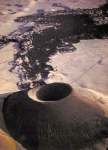
How Do We Depict Earth’s Surface?
EARTH'S SURFACE DISPLAYS various features, including mountains, hillslopes, and river valleys. We commonly represent such features on the land surface of an area with a topographic map or shaded-relief map, each of which is useful for certain purposes. Some maps allow us to visualize the landscape and navigate across the land, whereas others permit the […]
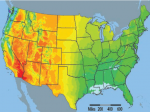
How Do Earth’s Four Spheres Interact?
ENERGY AND MATTER MOVE between the land, water, atmosphere, and biosphere — between the four spheres. There are various expressions of these interactions, many of which we can observe in our daily lives. In addition to natural interactions, human activities, such as the clearing of rain forests, can affect interactions between the spheres. Changes in […]

What Are Some Important Earth Cycles?
MATTER AND ENERGY MOVE within and between each of the four spheres. A fundamental principle of all natural sciences is that energy and matter can be neither created nor destroyed, but only transferred from one form to another — the First Law of Thermodynamics. A second principle is that energy and matter tend to become […]
Plate Tectonics: The Restless Earth
The Earth's surface is divided into several major crustal plates, layers of light rock 30 to 100 miles ( 48– 160 km) thick floating on top of the Earth's heavy, iron-rich mantle. Currents that originate in the molten, super-dense core trigger inexorable currents in the mantle above. The currents in the mantle, in turn, push […]
Grand Canyon Reveals the History of the Earth
The great gash of the Grand Canyon also provides perhaps the single most dramatic lesson in geology and the Earth's history on the planet. The Colorado River cut down through the leading edge of the uplifted Colorado Plateau in the past five million years as the same forces that created the Basin and Range Province […]
Creosote: The Oldest on Earth
One of the most widespread plants in the Mojave and Sonoran Deserts is the creosote bush, which nourishes its own interdependent set of creatures. Remarkably, the creosote might live longer than any other plant on the planet, nearly 12,000 years. That is remarkable considering the low, olive-green bush with tiny leaves thrives in areas too tough […]
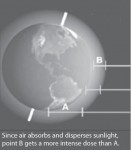
The Sun and Earth
Consider the total solar eclipse – a thing of undeniable beauty. When the Moon passes before the Sun, all that remains visible for a few minutes is the shimmering corona. Perhaps even more remarkable than the sheer beauty of an eclipse is its sheer improbability. The Sun is far larger than the Moon, but it's […]
The ultimate global superpower
Lets assume for a moment that the technology now coming along will allow us to get on top of climate change with only comparatively minor issues such as increased flooding and storms to cope with. If so, what might our long-term relationship with the Earth be like? Our species' self-awareness, planning and technology are already […]
In the meantime…
Our knowledge of stellar evolution, the development of stars over time, is solid enough to make the events described above pretty definite. But the many billions of years before any of this happens contain fewer certainties. What we can say for sure, however, is that nobody will be killed or even inconvenienced when the Sun boils […]
Supernova alert
A supernova is a star which has erupted on a terrific scale. When we see one in a distant galaxy, it can outshine all the other millions of stars that the galaxy contains. Our own Sun is not massive enough to go supernova, but that does not mean we are safe from them. One could […]
Asteroid hazard
Ceres, the biggest asteroid, was discovered on the first day of the nineteenth century. It is about 1000km in diameter and since 2006 has been officially promoted to the status of Dwarf Planet. Now we know over 15,000 asteroids, and in 2006,831 of them had been classed as potential hazards. This essentially means that they […]
Seeing the future
Some thinkers have already decided that we have made such a mess of the Earth that our future lies elsewhere. They are wrong for many reasons, not least because the solution they propose is far too complex. We do not know of any other place in the universe remotely as nice for humans as this […]
Extinction
“Extinction is for ever” used to be a green movement slogan. It is no longer completely true. Thanks to the wonders of genetic engineering, it is becoming possible to recreate lost creatures provided we have their DNA. The quagga, a species of zebra whose last member died in Amsterdam Zoo in 1883, is one animal […]
Are we causing a mass extinction?
Are we really living through a mass extinction? If so, we ought to take care. The lesson of the past is that the biggest and most dominant creatures are most likely to vanish when such a mass extinction gets going, while the more modest ones keep plugging on. If humans are using up a large […]
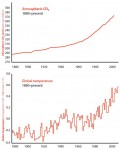
Climate change
Oil, coal and gas may be set to run out in the next century or so, but should we be using them in the first place? People have always known that fossil fuels present problems. Oil causes environmental damage when it leaks from pipelines or ships. Burning it produces a wide range of pollutants. The […]
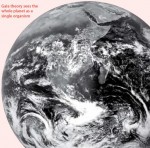
Gaia
Since the 1970s a group of scientists centred on James Lovelock, a British chemist specializing in changes in the atmosphere, have pushed the Gaia theory, whose message is that the Earth, far from being a jumble of interacting components, is a self-regulating system that might be regarded as a single organism. Of course, Gaia would […]
Climate change deniers
What should we do with our growing awareness that we are altering the Earth's climate? Some think that innovation, especially in energy technology, will sort it all out, given some political will and an awareness that there is profit in it. This is more or less this author's line, although I also think that time […]
How much are we using?
Lets start with the basic process that drives life on Earth – photosynthesis. Just how much of this process humans are making use of is controversial. As long ago as 1993, one estimate put the proportion of land plant production being used by humans at 40 percent. The jargon term here is NPP – Net […]
Life after oil
No business would take a look in its warehouse and panic because it had only forty years'supply of nails or envelopes left. Why should humans as a species behave differently when it comes to oil? The main reason is that they are not making oil, coal or gas any more. They are still being produced […]
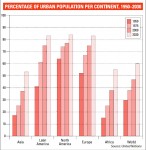
Want to save the planet? Move to the city
Although it is natural to regard cities as the most unnatural and environmentally damaging places on Earth, perhaps there are two sides to this story. Throughout history, people have voted with their feet by moving to cities. They have often faced extreme exploitation and poor living conditions to get closer to the jobs, education, crowds […]
Genetically engineered crops
As the pressure on our food supplies increases, could genetically engineered crops help food production keep pace with demand? The term genetic engineering, or biotechnology, normally means taking genes from one species and putting them into another. Almost all the plants and animals we eat have been improved by gradual breeding processes. Biotechnology allows the […]
Photosynthesis
Photosynthesis is the difference between the Earth and everywhere else we know about. From Mercury to Pluto and, so far as we know, on all the hundreds of other planets we have now discovered, sunlight – or starlight – falls on craters and mountains, clouds or ice, and is either absorbed or reflected. But on […]
The Earth and us
Many a literary metaphor contrasts the unvarying Earth with the fast-flowing fortunes of people. If you've read this far in the book, you'll know that this is inaccurate. Weather systems, sea levels, ice sheets and river courses change over time, in some cases surprisingly quickly. Of course, the solid Earth is made of sterner stuff […]
Sheer weight of numbers
Try thinking quantitatively about the hold humans have on the world. There are about 400,000 African and 40,000 Asian elephants. At about seven tonnes apiece, this means that the world has 3-4 million tonnes of elephant. This is about 1 percent of the mass of humans. Throughout history, human beings have been reluctant to share […]

Population growth
Is it a rule of nature that the population keeps on increasing? It might seem so from the relentless graphs of world population that adorn most books on the subject, including this one. But this century's newspapers seem to contain more headlines about a dearth of people than about a surplus. The reason is that […]
Melting glaciers
As recently as 1981 the maverick astronomer Sir Fred Hoyle published a book called Ice: The Ultimate Human Catastrophe predicting a new ice age. One possibility he considered was that an ice age might be triggered by a large meteorite impact putting enough dust into the Earths atmosphere to cause significant cooling. At the time […]

How to start an ice age
The Earth's 160,000 glaciers may be culled radically during our lives, but it is still very likely that the Earth's long-term future contains more ice ages. If it does, the massive glaciers and ice sheets that it entails will start small, like those we see today once did, with snow crystals that fall and do […]
White gold
Despite their decline, it is worth celebrating the great glaciers of the Alps instead of mourning them. There are glaciers all along the arc of the Alps from France to Slovenia, including the Mer de Glace in France, the Stubai in Austria and dozens of smaller ones. They provide the headwaters of many big European […]
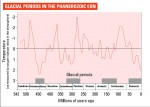
Ice ages
Snowball Earth may be the only time the Earth has completely frozen over. However, there have been periods of more or less severe glaciation throughout the Earths history. There were major glaciations about 3 billion years ago (the Archaean in geological time), about 2.4 billion years ago (the Proterozoic), and about 300 million years ago […]
Ice ages and us
What have ice ages got to do with people? Quite a lot, according to current thinking among scientists. Peter Forster, an archaeologist at Cambridge University in England, points out that the successive waves in which humans have spread across the world have mainly been determined by ice ages, both in their timing and in the […]
Loess is more
Glaciers can have a powerful effect across thousands of kilometres as well as nearby. Take loess. It is pronounced low-ess, and in small volumes looks suspiciously like dust. In fact its grains are somewhere in size between sand and clay. It was formed in vast amounts by the grinding action of ice during the last, […]
Geosight #5: The English Lake District
The Lake District in north-west England has become the beautiful place it is via a complex range of causes. It is on the edge of Europe and has a harsh climate in which its sub-1000m mountains can be as challenging as peaks three times as big in the Alps. This distinctive area of lakes and […]
Snowball Earth
Between them, the polar regions make up the majority of what is known to scientists as the cryosphere. The term is unnecessary because “the frozen part of the Earth” is just as clear. It is also wrong because the cryosphere is nowhere near spherical. In some parts of the world it is thousands of metres […]
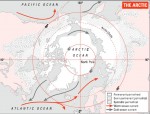
The Arctic
At the other end of the world, things are very different. The Antarctic continent is surrounded by the Southern Ocean, the worlds wildest ocean, which roars round the Earth untrammelled by land. But while the Antarctic is land surrounded by water, the Arctic is water surrounded by land. The pole itself is merely a spot […]
Ice cores
Ice cores are a solid record of the ancient environment. If you want to know how much carbon dioxide there was in the air 50,000 years ago, there is no need to speculate. You can find an ice core that old, find an air bubble in it, and measure its composition directly. While there are […]
Life in a cold climate
How do animals and people manage to live in the Arctic? Ask Karl Georg Christian Bergmann (1814-65). This German medic and anatomist worked out that as conditions get colder, animals get bigger. In the US, a much-studied example of Bergmann's Rule is the Song Sparrow. Members of this widespread species that live by the sea […]

The Antarctic
In the icy world, nothing can compare in size or importance to the Antarctic, which is almost a complete cryo-continent, covering about 14 million square kilometres, about as much as Mexico and the continental US put together. It has been a separate continent in the region of the South Pole for over 50 million years […]

Icebergs ahoy!
The thing that everyone knows about icebergs is that about 90 percent of the things are below water. Unusually for such a widely held belief, this one is completely true. Archimedes lived in Sicily and it is safe to say he never saw an iceberg, but he could have told you why. His Principle tells […]
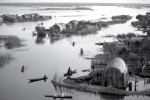
The ultimate mineral
There are now 6.5 billion people living on the Earth. They use about 26 trillion tonnes of water a year for everything from irrigation and drinking to steel-making and washing their cars. By contrast, they use “only” about 4 billion tonnes of oil a year. So, although most water isn't traded, it is a more […]
Unseen seas
The reserve of water that is thought about least often is the one you cannot see. Billions of tonnes of the stuff exists just below our feet and has a vital role in the Earths living and non-living systems. As we have seen, the Earth gets steadily hotter with depth, and soon reaches the boiling […]

Nino or Nina?
El Nino has hit the headlines as a codeword for bad weather, especially in the Pacific and California. But there is a little more to it than that. The name El Nino might suggest a relatively benign phenomenon. Would the devout Catholics of Latin America call something after the Baby Jesus if it was particularly […]

A pattern of islands
Even the broadest sea is not a bare expanse of blue. If it were, where would treasure be hidden, and where would the castaways be cast? Islands come in several flavours and we have met a few already. Some are simply accumulations of sediment that happen not to join onto the land. At major river […]
Geosight #4: The Great Barrier Reef
Its Australian publicists term the Great Barrier Reef “the largest natural feature on Earth” which it is not. There are plenty of mountain ranges that beat it for size. But their enthusiasm is understandable. The reef is undoubtedly the largest living thing on Earth, running for 2300km off the north-east coast of Australia. Its northward boundary seems […]
New land
Those maps of the Earth look terribly solid, but don't be fooled. Just as Belarus or Eritrea can appear from something that was once labelled the Union of Soviet Socialist Republics or Ethiopia, new land can spring forth from the sea. In a volcanic chain such as Hawaii, new islands are created first as lumps […]
Old man River
Rivers, too, have their own hold on the human imagination. Most great cities that are not on the sea have a river running through them and would never have grown up without one. Nor is any painting of a wild landscape complete without flowing water. At all points in its course, a river is best […]
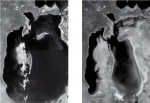
Landlocked
The worlds inland seas and lakes have a unique allure. Little ones such as those in the English Lake District or the Alps have had the power to inspire artists and writers from William Wordsworth and Mary Shelley onwards. Think of the wild weekend on the stormy shores of Lake Geneva in 1816 when the […]
Soda lakes
Soda lakes are the favoured environment for flamingos, which – in the words of the Kenya Birds organization – enjoy standing in boiling caustic soda. They have a high concentration of dissolved alkalis, mainly sodium hydroxide. But how did they get that way? Susan Baumgarte of Brunswick Technical University in Germany points out that such […]
The sea, the sea
The deep and surface ocean currents carry far more than heat around the world. They mean that salt, oxygen and other chemicals are distributed more or less evenly around the Earths oceans. However, many of the Earths most important water masses are seas rather than oceans. What they lack in size, they make up for […]

Wave power
Although currents both deep and shallow carry billions of tonnes of material around the Earths seas and oceans, waves are the most visible manifestation of the power of the world's water. Even a lake can contain worthwhile waves. But they are seen at their biggest in major oceans. The highest attested wave, seen during an […]

Current affairs
Like the rocks beneath and the vapours above, the waters of the Earth see no reason to stay still. And if you recall the heat engine that drives the atmosphere from the previous chapter, you will soon see the analogies with ocean systems. As with the atmosphere, the best place to start describing the way […]
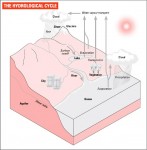
The hydrological cycle
The big message of this book is that the Earth is a single, understandable system in which everything joins together. Nowhere is this more apparent than when we consider the hydrological cycle. This is the machine that connects the Earths airy, watery and icy zones. In these pages, these parts of the planet are separated […]
Water, water, everywhere…
Water exists almost everywhere on the Earth. In the oceans it can be thousands of metres deep. But it also occurs in the form of ponds and puddles (which we shall not dwell on too much), seas and lakes, streams and rivers, and ice caps and glaciers, the subject of our next chapter. Water makes […]
Whatever next?
The weather is a severe hazard in some parts of the world, and even where it is depressingly familiar, people love to complain about it. But in recent decades, their discussion has at least become a lot better informed, because our ability to forecast the weather has been much enhanced. Perhaps more importantly, forecasts have […]

Planes, boats, skis
Despite the attention paid to the exceptions, much weather is a story of modest variation around the average. There are, however, times and places when the details are all-important. Possibly the first profession to find this out were sailors, for whom the weather has long been a prime hazard. For most of history, too, the […]
Shepherd’s delight
The adage 'Red sky at night, shepherd's delight; red sky in the morning, shepherd's warning'has high-powered support. Jesus mentions it in the Bible (Matthew 16, verses 2 and 3), and it appears in Shakespeare's epic poem Venus And Adonis. But how does it work? Remember that the sky is blue. This is because the air […]
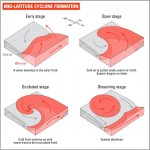
Extreme weather
So far in our survey we've encountered nothing more unpleasant than a severe soaking, but what about when things turn really nasty? Step this way for all kinds of severe weather, starting with storms, cyclones and their even more extreme cousins the hurricanes and typhoons. Cyclones It you watch much news on the TV, you […]
The most varied weather
We may have identified the places with the highest and lowest temperatures, and the strongest winds. But where in the world sees the most variety in its weather forecasts? Finding the biggest combination of weather extremes is tricky, but there is no doubt that the bigger your country, the more weather it can have. Smaller […]
The least gripping weather
Most big news stories about the weather are to do with extremes. Snow falling metres deep, hailstones the size of footballs, winds faster than jet planes: these are the stuff of weather legend. But spare a thought for one record that is too rarely explored. What about the record for crushingly dull weather? Spare a […]
Lightning
In the US, according to the National Oceanic and Atmospheric Administration, lightning kills an average of 66 people a year: more than volcanoes or hurricanes, fewer than floods, but still 66 too many. But lightning is one of the most preventable deaths. The solution is to either get indoors (and stay away from wires and […]
Naming the guilty parties
As if the plethora of terms used to describe tropical storms weren't enough, the most significant storms are assigned their very own name too. But where do these names come from? Namer-in-chief is the World Meteorological Organization, which controls the lists of names. But local bodies such as the US National Oceanic and Atmospheric Administration […]

Precipitation
The end result of most weather systems seems to be precipitation of one form or another. This is the word for falling rain, snow, hail, sleet, rime, dew and anything else that finds its way from the air to the land and consists largely of water. It appears to be untrue that the Inuit have […]
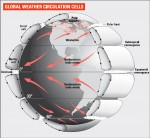
The weather machine
Despite this reassuringly stable structure, the atmosphere is the most restless component of the Earth. Continents creep apart at a few centimetres a year, ocean currents are measured in kilometres an hour – but the fastest wind ever measured, on 12 April 1934 on Mount Washington in New Hampshire, US, was 372kph. But although there […]
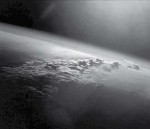
Atmospheric layers
Like the solid Earth, the atmosphere is divided into distinct layers. Take a deep breath: you have just inhaled part of the troposphere, the lowest layer of the atmosphere. A little like the Earths crust below' your feet, the amount of troposphere above you varies with your location. Near the Equator it is about 16km […]
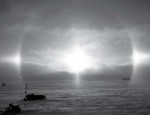
Atmospheric special effects
Even with no clouds in the sky, there are plenty of amazing atmospheric phenomena to look at. Many, it turns out, are to do with ice. The most basic is a ring of light seen around the Sun or Moon when conditions are cold enough for there to be ice crystals at altitude. It is […]

Living high
The higher above sea level you are, the lower the air pressure will be. On the summit of Everest, it drops to around 350 millibar, about a third of the pressure at sea level. In Rangdum in Ladakh, northern India, one of the highest places on Earth inhabited by humans, the average air pressure is […]
Differentiation
Nowadays our understanding of the solid Earth is subtle and satisfying, although the plume controversy shows that there are always new insights coming along. In particular, the idea is now firmly established that the different parts and layers of the Earth interact. Even the slow growth of the inner core has effects on the surface. […]
Onwards and downwards
Volcanoes are proof that even the depths of the mantle matter to us. Now we are going even deeper, to the parts of the planet wrhose components – we think – never have a hope of seeing daylight. While mantle material makes its way to the Earths surface daily, the core plays only a supporting […]
The effects of a reversal
If the Earth's magnetic field decided to reverse, just how would life change? And what could we do about it? Start by buying shares in companies that make GPS receivers. For a long period before it became truly reversed, the magnetic field would be reflecting a mixed convection pattern in the Earth's core and would […]
The compass
Most of the elements in the periodic table respond only slightly to magnetic fields. But three – iron, nickel and cobalt – are ferromagnetic.They react strongly to magnetic fields and can retain their own field if they are exposed to one. The reason is that the atoms of these metals have electrons which orbit their […]
Naming the clouds
Clouds are displays of water vapour in the sky, sculpted by flowing air. People have been observing them for centuries. The names by which we know them today were thought up by Luke Howard, an English scientist who lived from 1772 to 1864. Today we puzzle at terms such as cumulonimbus or cirrus, but for […]

Making volcanoes
If all this seems a long way away from everyday life, think again. Richard Muller of the University of California at Berkeley points out that shifting material at the core-mantle boundary (the CMB, if you are meeting geophysicists you need to impress) could have effects at the Earths surface. There could be landslides there which […]
A volcano in action
The subduction zone where the Australian plate slides below the Asian plate has produced many of the world's deadliest volcanoes. None is more famous than Krakatau. Observations of its explosion in 1883 are regarded as the foundation stone of modern volcanology. It began on 20 May, when a German naval vessel reported an 11 km-high […]
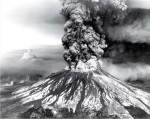
Killer volcanoes
It is rare for volcanoes to kill in numbers comparable to the death tolls associated with large earthquakes. However, the US Geological Survey lists 35 volcano eruptions since 1500 that are recorded as killing over 300 people each. The list is probably not perfect, because for much of history, birth registers, electoral registers and the […]
Live volcanoes
Nobody knows how many active volcanoes there are on the Earth. For one thing, activity does not necessarily mean that a volcano is spurting lava right now. Signs of life in recent decades that might be resumed in the future are enough for a volcano to be viewed as active. In August 2005, some thorough […]
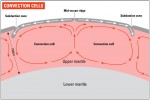
The mantle
It is not only rock density that changes at the Mohorovicic Discontinuity. It is also marked by severe changes in rock composition. Above it we find the rocks we know from surface-based geology. Below, we enter a new world. The boundary between the crust and the mantle below is no hermetic seal, however. It is […]
Diamonds
Thanks to the rise of feminism, it has ceased to be acceptable to regard them as a girl's best friend. So what are diamonds? Everyone knows that they are a form of carbon, but just how they got their distinctive hard and dense form is a story that tells us a lot about the deep […]
Moholes
Ever since Andrija Mohorovicic named the Mohorovicic Discontinuity in 1909, it has exerted a powerful fascination on people who think about the deep Earth. Taking a look at what lies beneath would allow us to move the Earth sciences beyond peering at the crust, which is only a minute and unrepresentative sample of the whole […]
Probing the inner depths
We may not be able to see it first hand, but we have not let that stop us finding out about the deep Earth. There is one tool above all that helps us to do so: the earthquake. As we saw in Chapter 3, the shock waves emitted by earthquakes have been used to detect […]

Reading history in rocks
All these rocks hold clues to the history of the Earth and, through many years of hard work by hammer-wielding geologists, this information has been painstakingly unlocked. In a saga of endeavour generally traced back to the work of William Smith in early-nineteenth-century England, the geological tale of the Earth has been assembled bed by […]
Superposition
The Lower and Upper Carboniferous owe their names to the deepest theoretical tenet of geology – the Principle of Superposition. This states that the new stuff is on top of the old stuff. It is credited to Niels Stensen (a Dane, who like many intellectuals of the day usually went by a Latinized version of […]
Reading a bed
Geologists can learn a lot from careful study of a rock face. For instance, parallel lines, similar to high tide marks on a beach, show that you are looking at a rock made from sediments deposited in shallow water, buried and lithified, and now exposed again by erosion. However, the full story of a rock […]

Name that era..
The terms familiar from the geological column are only the most basic elements of the story. But these names themselves are worth a visit. Some are derived from the type of rock that characterizes them, as with Carboniferous for strata involving lots of coal, or Cretaceous for the chalky strata. Others come from the area […]

New rocks from old
If this deposited material remains undisturbed, over time it may eventually solidify to form sedimentary rock. Similarly, some of the material that is dragged deep below the Earths surface by tectonic processes will reappear at the surface as igneous rock, recreated entirely by melting, or as metaniorphic rock, severely altered by the heat and pressure […]
Life makes rocks
If the Earth were completely lifeless, the rocks that make it up would be quite different from those we know. Although the Earth has produced life, life has also produced the Earth we see around us. The importance of life in making rocks is most apparent in the case of limestone, the various types of […]
Deposition
All this erosion means radically altered landscapes. But because the Earth is a closed system, it also means that material is being dumped elsewhere. Once the ice, wind or water carrying eroded material away from its original location no longer has the energy to transport it further, the process known to geologists as deposition occurs. […]
Washed away
The one thing we have already found out about mountains is that at the Earths surface, nothing is for ever. Eventually they are all worn down to the sea, a truth that poets have often found useful when on the hunt for a gloomy metaphor. This process is erosion. This scientilic term has had the […]
UNESCO’s geoparks
For many years, the UN Educational, Scientific and Cultural Organization (UNESCO) has been putting important places around the Earth on the World Heritage List. In 2006 there were 830 of them. Most are on the list for their role in human development: nothing wrong with that. But some are there for their natural attributes, such […]

Geosight #3: The Niagara Falls
The Niagara Falls are one of the most viewable and well-visited geosights in existence. They stretch across the Niagara River between the US and Canada, interrupted by Goat Island. Just over a kilometre wide, they carry 100,000 litres of water a second. They are over 50m high, and are the biggest barrier on the short […]

Making mountains
The mountain ranges we see today include some still under construction, others where the process has long ended and whose erosion reveals the innards of the mountain-making process, and yet others at every stage in between. The one thing we never see is a stable mountain range. Once it is built, a mountain is doomed […]

A shifting outer shell
Like any other crust, the Earths is a stiff outer layer that conceals what lies beneath. However, it is not a monolithic structure that sits unchanging and impervious below our feet. It is being transformed the whole time and on every timescale, from the day-to-day change associated with minor earthquakes on up to the shifting […]
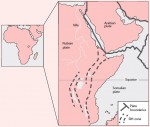
The Great Rift Valley
The Great Rift Valley runs for nearly 5000km down the eastern edge of Africa from Syria to Mozambique. Varying in depth from a few hundred metres to almost 3000m in Kenya's Mau Escarpment, it includes many well-known landmarks, from the Dead Sea to Lake Tanganyika. The valley is the result of the gradual separation of […]
The 1906 San Francisco earthquake
On 18 April 1906, at 5.12am, a major earthquake struck San Francisco. Up to 3500 people were killed and hundreds of buildings destroyed, many by the fires that broke out across the city after gas pipelines were ruptured. The quake was caused by a modest-sounding movement of about 7m on the San Andreas Fault, probably […]
Killer earthquakes
There is a grisly debate about just which earthquake has killed the most people, but there is little doubt that they are the most deadly of natural hazards, ahead of severe weather. There are thousands of small earthquakes every day, and on average one big one a year at or above 8 on the Richter […]

Geosight #2: The Icelandic Ridge
The Mid-Atlantic Ridge is normally hidden below about 2.5km of seawater, where it can only be explored with high-technology submersibles and other expensive gear (see www.lostcity.washington.edu). But for a more accessible view of ocean floor spreading in action, get on a plane to Iceland. Iceland is located on a hot spot in the Earth's crust, […]
Meteors
For those who prefer to stay a little closer to home, outer space provides lights in the sky you can see from your own back garden, provided it is not too affected by light pollution. Like the aurora, meteors are a little bit of high drama from the solar system delivered direct to the Earth […]
Impact craters on the Earth
It's a lively place, the surface of the Earth. The rain falls, the winds blow and the sands drift, and over a slightly longer period, the continents move about and recycle large chunks of the planet's crust. So impact craters may appear at a steady rate, just like they do on the other planets and […]
Is that a meteorite?
Few items in modest local museums are misattributed as often as alleged meteorites. If there were bogus Picassos about on the same scale, the curators would be fired en masse. Meteorites and tektites sold by dealers are usually the real deal. (The same cannot be said of the wares peddled by some of the more […]
Meteor showers
Here is a selection of meteor showers that are regarded as fairly reliable: Quadrantids 1-5 January Lyrlds 16-25 April Eta aquarids 19 April-28 May Southern delta aquarids 12 July-19 August Perseids 17 July-24 August Draconids 6-10 October Orionids 2 October-7 November Leonids 14-21 November Geminids 7-17 December Of these, the Quadrantids and Draconids arrive too […]
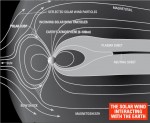
Solar radiation
Take a look at the power output of the Sun, and it is obvious that visible light accounts for most of it. After all, the Sun looks yellow. We have evolved to make the most of the available light, which is why most animals have eyes that work in light wavelengths. Indeed the colour to […]